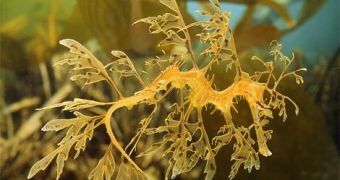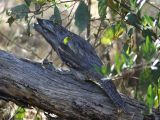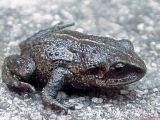Camouflage and mimetism are part of the behavior and characteristics of a large variety of species and they are also their main survival weapons.
To camouflage (homochromy) in order to escape predators or to surprise the possible preys is to melt into the hues and shapes of the environment or cover itself with bright colors to warn of its own presence and suggest danger.
Polar animals, like the polar bears and polar owl are white. In the savanna, lions employ camouflage. They remain for large periods of time immobile in the bush without anybody being aware they are there, due to their tawny color. This tactic is especially efficient during the dry season, when the prey is scarce and the lions cannot afford losing food for being detected early by their prey.
The same camouflage color is used by the African ground squirrels or prairie dogs, which use the autumn hues in their coat for detecting hypothetic predators.
Many insects (like grasshopers), snakes and birds (like parrots) have a green color that makes them difficult to distinguish in the grass or in the forest. Movie makers spend a lot of time detecting a leopard in the wild, even if they are abundant in an area...
Most bottom fishes, like rays and angelfish, cannot be distinguished from the substrate.
Some animals have cryptic shadow: they are dark above and light below, like tuna and many other fishes.
There are species changing the homochromy according to the season, like the ptarmigan and arctic hare, which are brown in the summer and white during winter.
But when it comes to mimetism, there is more than camouflage: the animals imitate natural elements with an amazing precision. Stick insects really look like a stick and even imitate during their movements the shaking of a stick blown by the wind. Leaf insects not only imitate a green leaf with nerves, but also the attack of fungi on the imaginary leaf!
The leafy sea dragons, relatives of the sea horses, can be differentiated with difficulty from algae.
The tiny black toads (Oreophrynella) from the Roraima tepui in Venezuela have the color and texture of the rocks on which they live and this is also the case with many butterflies and the tree bark or dead leaves.
Some butterflies from Costa Rica have a total lack of color, being completely transparent. The frogmouths from Australia and nightjars have a plumage that makes them difficult to distinguish from the tree bark.
The chameleons' ability to change color is well-known, depending in which environment they are found at a given moment. But they are amateurs compared to the ability of the octopuses, cuttlefish or flounders.
Some animals play dead as an active method of defense: many predators will only eat prey which is alive...The opossum is the most famous when it comes to playing dead, hence the term "playing possum". Many snakes, too, use this strategy, and besides the immobility, they expel through some anal glands a decomposing corpse scent... Besides discouraging animals that eat only living prey, playing possum also convinces some large animals that the individual is no threat to their young.
Many insects (like wasps or caterpillars), spiders, venomous fish and snakes (like kraits and coral snakes) and toxic amphibians (like salamanders, fire-bellied toads and poison dart frogs) warn about their toxicity through bright colors and elaborated patterns.
That's why many species evolved models imitating the colors of the real dangerous animals, so that their predators won't attack them, confounding them with the dangerous species.
There are flies imitating the color of the wasps and many non-toxic butterflies toxic species of butterflies. Over 15 genera of non venomous snakes imitate in Americas the model of the highly venomous coral snakes...
There are even non-toxic moths imitating the ultrasounds emitted by toxic moths, being avoided this way by the bats.
Sometimes, the predator imitates the prey, to get closer easier, like in the case of some beetles. Some parasite flies imitate the bumble bees in whose nest they depose their eggs.

 14 DAY TRIAL //
14 DAY TRIAL // 


